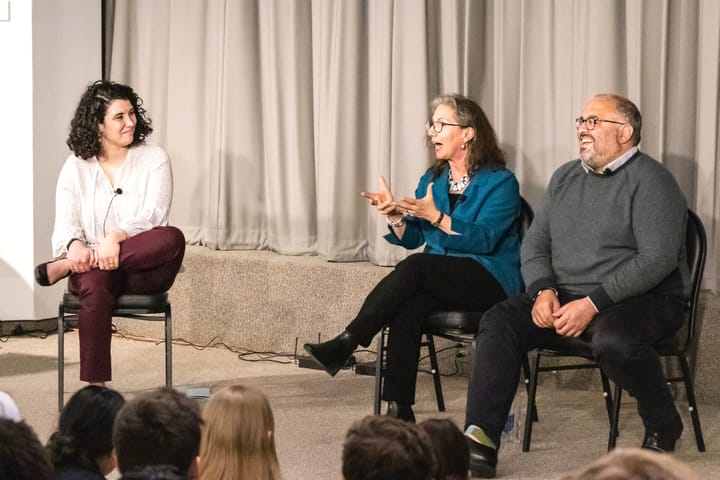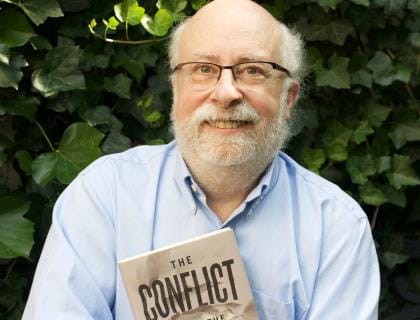Town of Amherst Moves Forward With Reparations for Black Residents
Following the Amherst Town Council’s June 2021 vote to establish a reparations fund for Black residents, the Town is implementing community engagement plans to develop a strategy through which the reparations will ultimately be distributed.
In June 2021, the Amherst Town Council voted to establish a reparations fund as a step towards reconciling with historic and current harm inflicted on Black residents. Over the last eight months, the town has undergone several significant steps towards distributing reparations. Most notably, the Town Council established the African Heritage Reparations Assembly (AHRA) and developed the Municipal Reparations Plan, through which it will ultimately distribute reparations.
This decision to establish a reparations fund was made a year after a petition calling for reparations garnered over 400 signatures from town members. In the following months, the Reparations for Amherst (R4A) group formed to advocate for reparation policies. The group has gathered historical information to reckon with the ongoing legacy of white supremacy and anti-Black racism in the town of Amherst. Beginning with the history of enslavement in the town of Amherst, the harms done to Black residents by white supremacy in the area have continued to change shape over time. Today, the committee has identified housing, education, health, income and employment, transportation, and policing as key categories in which Black/white disparities are still clear.
The reparations fund that the town council voted to establish currently holds around $206,000. Originally planned to be drawn from the town’s cannabis tax revenue, this money instead came from the town’s free cash reserves. The AHRA, with the approval of the town council, generated a three part Municipal Reparations Plan to assess eligibility and the form of distribution for reparations. The assembly is composed of seven voting members: six Black residents of Amherst, two of whom have served on elected bodies in Amherst, and one representative of R4A.
AHRA is currently in phase one of the plan, “Data Collection,” which centers around “reparations education and awareness,” “community engagement and communication,” and “building the foundation,” according to the group’s official timeline. This first phase is predicted to last from January 2022 to June 2022. Councilwoman Michele Miller, the R4A representative in AHRA, emphasized the community engagement aspect of phase one, since the ARHA believes eligibility criteria for reparations must be determined through input from Amherst’s Black community as a whole.
To facilitate this engagement and understanding of harm, the AHRA partnered with UMass Amherst’s Donahue Institute to develop a Black census. The census will provide the AHRA with basic demographic information about where the Black community in Amherst resides. The AHRA is also developing a harm report to expand on the original disparity report published by R4A.
“Identifying the harm is a key component of getting to wherever we want to go. … It is an important component of the first two phases,” said Irv Rhodes, a Black resident of Amherst, member of AHRA, and member of the Black Amherst Assembly.
“After identifying what the harm was and the extent of the harm, and what segments of the Black population were directly or indirectly harmed, we can begin to construct a matrix as to how to apply the proceeds of the fund,” he said.
Miller also emphasized the importance of understanding specific harms in order to engage in planning for reparations. “What we need to be able to do is link the harm with its impacts on the Black community in order to determine who’s eligible. Ideally, there will eventually be both direct benefits that come out of that, and community benefits,” she said.
In addition to using information from the Donahue Institute partnership and the expanded harm report, the AHRA hopes to achieve the goals of the community engagement phase by reaching out and engaging the community in specific ways, whether through “small listening sessions, where we invite small groups of people to get together and talk about what reparations means to them…[or] large town hall meetings [and] community wide forums,” according to Miller. She noted that wider community engagement efforts will occur after all information has been received.
Some of AHRA’s community objectives include engaging with “residents of African heritage” as well as “non-Black residents,” as well as elected officials like town councilors and school board members, and “Family, Community, and Civic organizations” like the Survival Center and Rotary Club.
The AHRA will also further community engagement by reaching out to Amherst’s “anchor institutions,” including Amherst College, UMass, and Hampshire College. Although there have been attempts to change how Amherst College deals with its legacy of racism internally, there has not been much word as to how the College will connect with the town’s efforts as a whole. According to Caroline Hanna, the College’s Director of Media Communications, “[the College is] having ongoing conversations with the Town about a range of things, the reparations work among them.”
After the completion of phase one, phase two will bring the development of a draft plan to determine possible remedies for repairing harm done to Black residents throughout Amherst’s history, incorporating feedback gathered from the community in this process. In addition, phase two will focus on developing a process for making individual reparations, as well as implementing collective reparations. Phase three will focus on identifying other funding sources, whether those are municipal, from “anchor institutions,” or from private funds.
One likely pathway for the distribution of the reparation funds would be the creation of special legislation, such as a Home Rule petition. Through a Home Rule petition, the town of Amherst would recognize reparations as a public necessity, and define the need for reparations for the community at large. If the Home Rule petition passed through the town council, it would be sent to the state representative for approval, ultimately creating a plausible legal pathway for reparations funds to be allocated.
Rhodes reflected that the distribution of the reparations money is “a very difficult question to answer at this point.” His personal belief, he stated, is that “the majority of these funds should be spent on education and education-related services for African American children who attend our schools.”
These education and education-related services, Rhodes said, could take the form of providing for free Pre-K education, “eliminating strict income guidelines for free and reduced lunch and making it free for all Black children,” starting the free after-school tutoring and recreational programs that many kids “cannot now afford,” providing free transportation for parents to attend school events, and eliminating feels that restrict kids from participating in school activities.
Nick Grabbe, former Amherst-based newspaper editor and co-coordinator for the Amherst Current, published an opinion piece, written by Miller, endorsing the reparations movement in January. “The exploitation of African American labor before the Civil War, and the political disenfranchisement following it, demand a response,” Grabbe said. “I am proud to live in a town that acknowledges this responsibility … But I think disbursing money will not be enough; I think we also need some kind of moral reckoning for the injustices suffered by African Americans.”
Miller called for more students from Amherst’s anchor institutions to get involved and raise awareness for the town’s reparations efforts. “What can we collectively work on together to repair these harms? What resources do we have available to us right here — whether they’re financial, economic resources, community resources or academic resources … that we can use to make the necessary repairs?”
“We need to find a way to connect,” Miller said. “Because the history of Amherst College is the history of the town of Amherst, and I think it’s really important that we all recognize that and work together.”





Comments ()